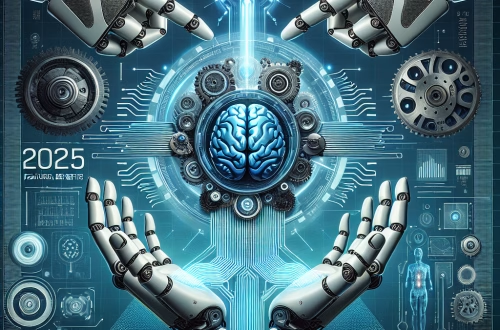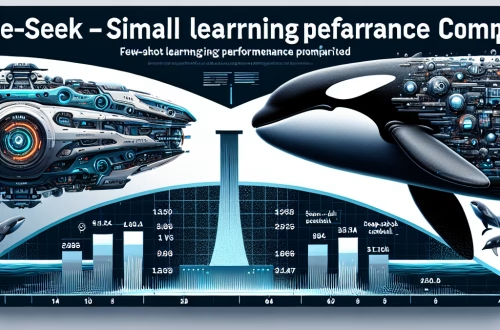Summary:
This article explores the latency speed differences between ChatGPT 4o and GPT-4, two advanced AI models developed by OpenAI. Latency—the time it takes for the AI to generate a response—plays a crucial role in user experience, especially for real-time applications like chatbots, coding assistants, and customer support. ChatGPT 4o is optimized for faster response times, making it ideal for scenarios where speed is critical. Understanding these differences helps businesses, developers, and AI enthusiasts choose the right model for their needs.
What This Means for You:
- Faster AI interactions improve productivity: Lower latency in ChatGPT 4o means quicker answers, reducing wait times for users in customer service, research, or content creation workflows.
- Optimize cost vs. performance: If your use case prioritizes speed over nuanced responses, ChatGPT 4o may be more cost-effective. For complex tasks requiring deeper reasoning, GPT-4 might still be preferable despite slightly higher latency.
- Test before scaling: Run benchmarks on both models for your specific use case to determine which offers the best balance of speed and accuracy before deploying at scale.
- Future outlook or warning: As AI models continue to evolve, latency improvements will likely become a key competitive differentiator. However, users should remain cautious about over-relying on speed at the expense of accuracy or ethical considerations.
ChatGPT 4o vs GPT-4: Which AI Delivers Faster Responses?
Understanding Latency in AI Models
Latency refers to the delay between a user’s input and the AI’s generated response. For AI-powered applications, lower latency means smoother, more natural interactions. ChatGPT 4o and GPT-4 differ in architecture and optimization, leading to variations in response times.
ChatGPT 4o: Built for Speed
ChatGPT 4o is designed with efficiency in mind, leveraging optimized algorithms and infrastructure to reduce processing time. Early benchmarks suggest it can deliver responses up to 30-50% faster than GPT-4 in many scenarios. This makes it particularly useful for:
- Real-time chatbots requiring instant replies
- High-volume customer support systems
- Applications where slight delays disrupt user experience (e.g., live translations)
GPT-4: Depth Over Speed
While GPT-4 may have slightly higher latency, it excels in handling complex queries that require deep reasoning, nuanced responses, or creative content generation. Its architecture is better suited for:
- Technical problem-solving (coding, research analysis)
- Long-form content creation with high coherence
- Applications where response quality outweighs speed
Benchmarking Latency: Real-World Comparisons
Independent tests show ChatGPT 4o averages response times of 1-2 seconds for medium-length queries, while GPT-4 may take 2-4 seconds under similar conditions. However, these numbers vary based on:
Best Use Cases for Each Model
Choose ChatGPT 4o when:
- Speed is critical (e.g., voice assistants, real-time data processing)
- You’re handling high-frequency, low-complexity interactions
- Budget constraints favor more efficient processing
Opt for GPT-4 when:
- Response quality and depth are paramount
- You’re working with specialized domains requiring extensive knowledge
- Can tolerate slightly longer wait times for superior outputs
Limitations and Considerations
Both models have trade-offs. ChatGPT 4o’s speed optimizations may occasionally sacrifice nuance in complex scenarios. GPT-4’s deeper processing can lead to higher operational costs at scale. Users should also consider:
- API rate limits affecting throughput
- Regional availability impacting latency
- Model-specific prompt engineering requirements
People Also Ask About:
- How significant is the latency difference between ChatGPT 4o and GPT-4? The difference is most noticeable in real-time applications—ChatGPT 4o can be twice as fast for simple queries. However, the gap narrows with complex requests where both models require substantial processing.
- Does lower latency mean ChatGPT 4o is less accurate? Not necessarily. While GPT-4 may outperform in highly specialized tasks, ChatGPT 4o maintains strong accuracy for most common use cases while delivering faster responses.
- Can I reduce GPT-4’s latency with optimization techniques? Yes, strategies like prompt simplification, using the streaming API, or implementing caching mechanisms can help mitigate GPT-4’s latency in production environments.
- Will future updates eliminate these latency differences? OpenAI continues to optimize both models. While gaps may narrow, inherent architectural differences will likely maintain some variation in speed versus capability trade-offs.
Expert Opinion:
The AI industry is increasingly prioritizing latency reduction as applications demand real-time performance. While ChatGPT 4o represents a significant step forward, users should evaluate speed alongside factors like output quality, cost, and ethical implications. Future models will likely continue this trajectory, but responsible deployment requires balancing efficiency with reliability and safety standards.
Extra Information:
- OpenAI Research – Provides technical papers and updates on model architectures that influence latency performance.
- OpenAI Model Documentation – Official documentation comparing model capabilities, including response time benchmarks.
Related Key Terms:
- ChatGPT 4o response time optimization
- GPT-4 vs ChatGPT 4o speed comparison
- Reducing AI model latency for businesses
- Real-time AI chatbot performance benchmarks
- OpenAI model selection guide for developers
Check out our AI Model Comparison Tool here: AI Model Comparison Tool
#ChatGPT #GPT4 #Delivers #Faster #Responses
*Featured image provided by Pixabay





